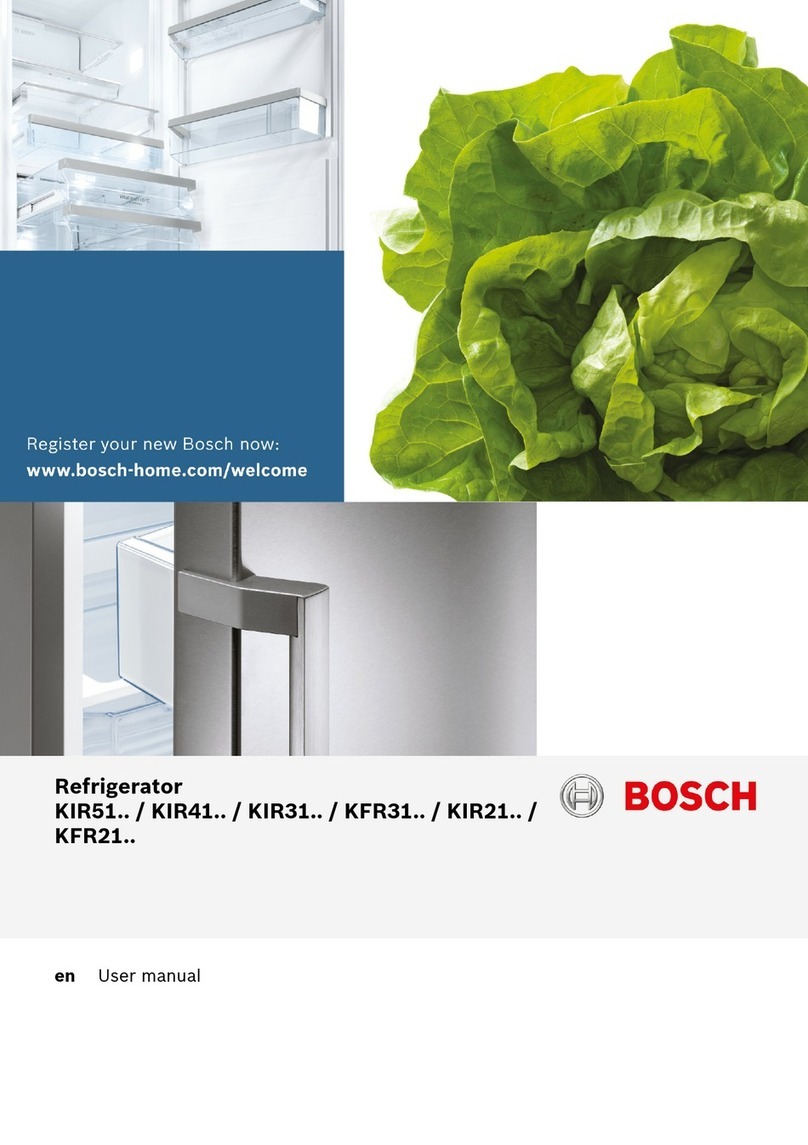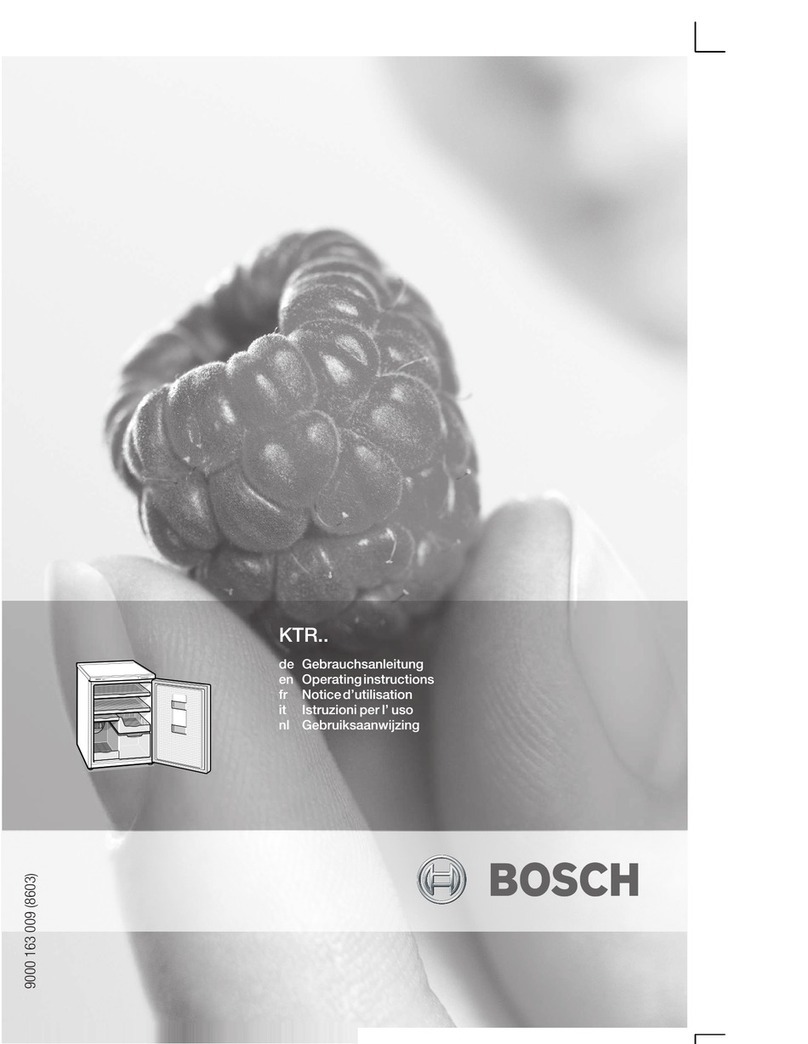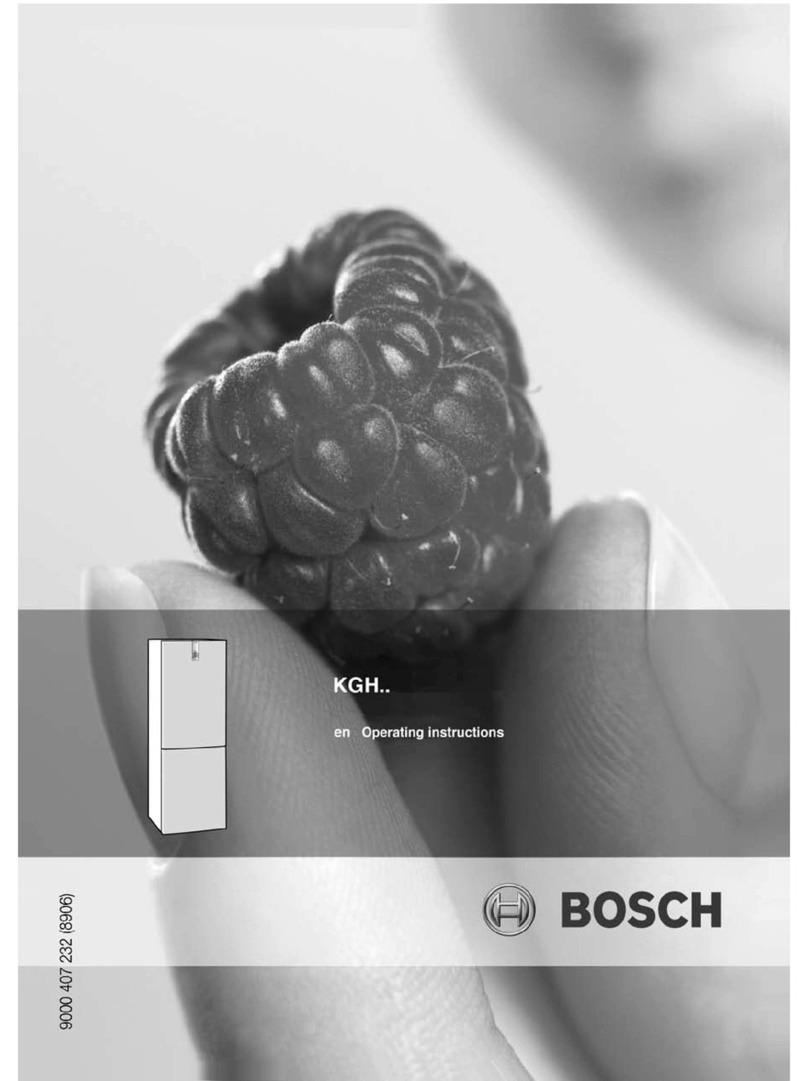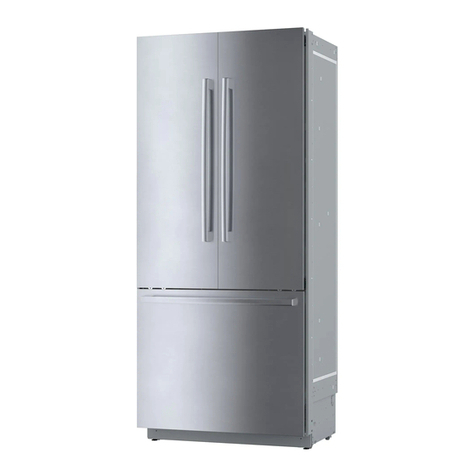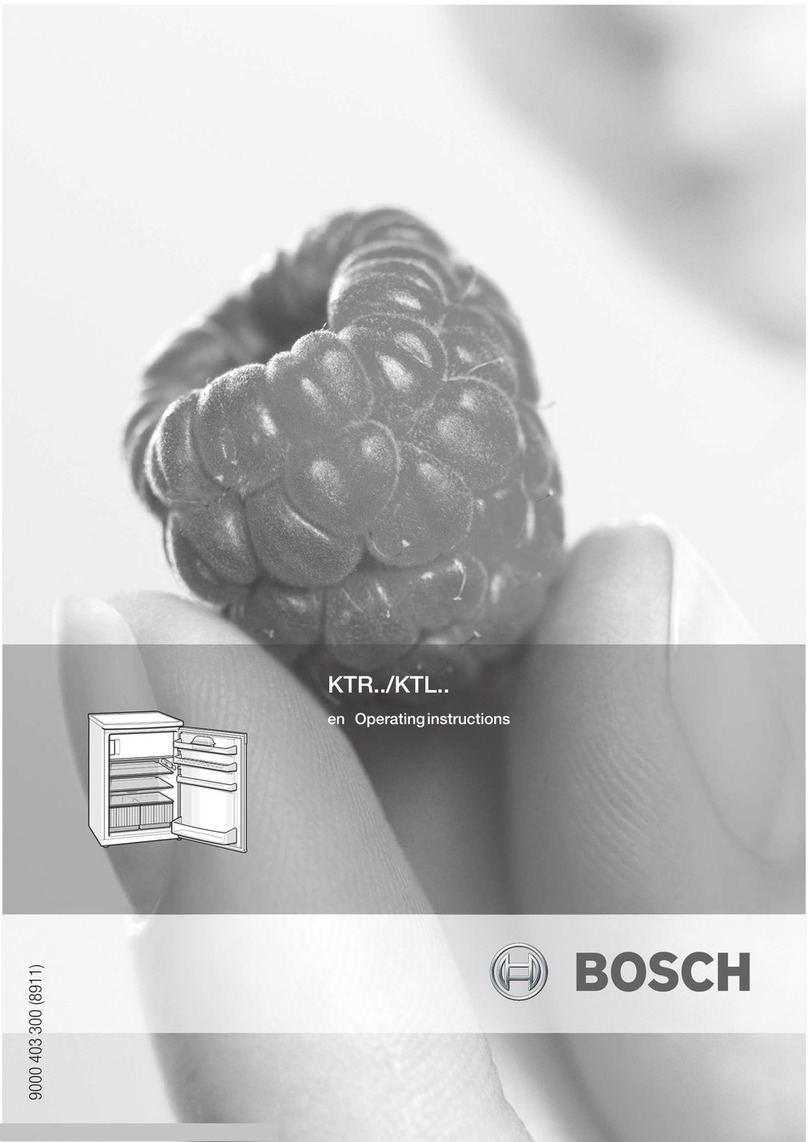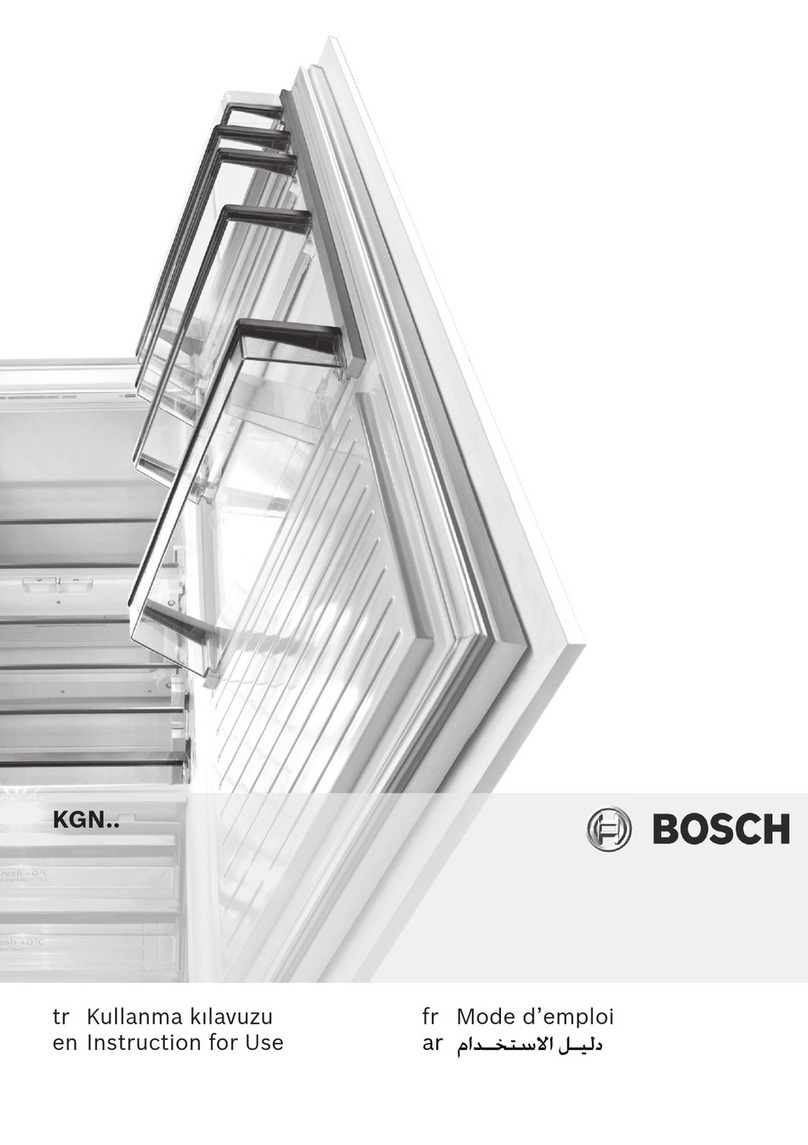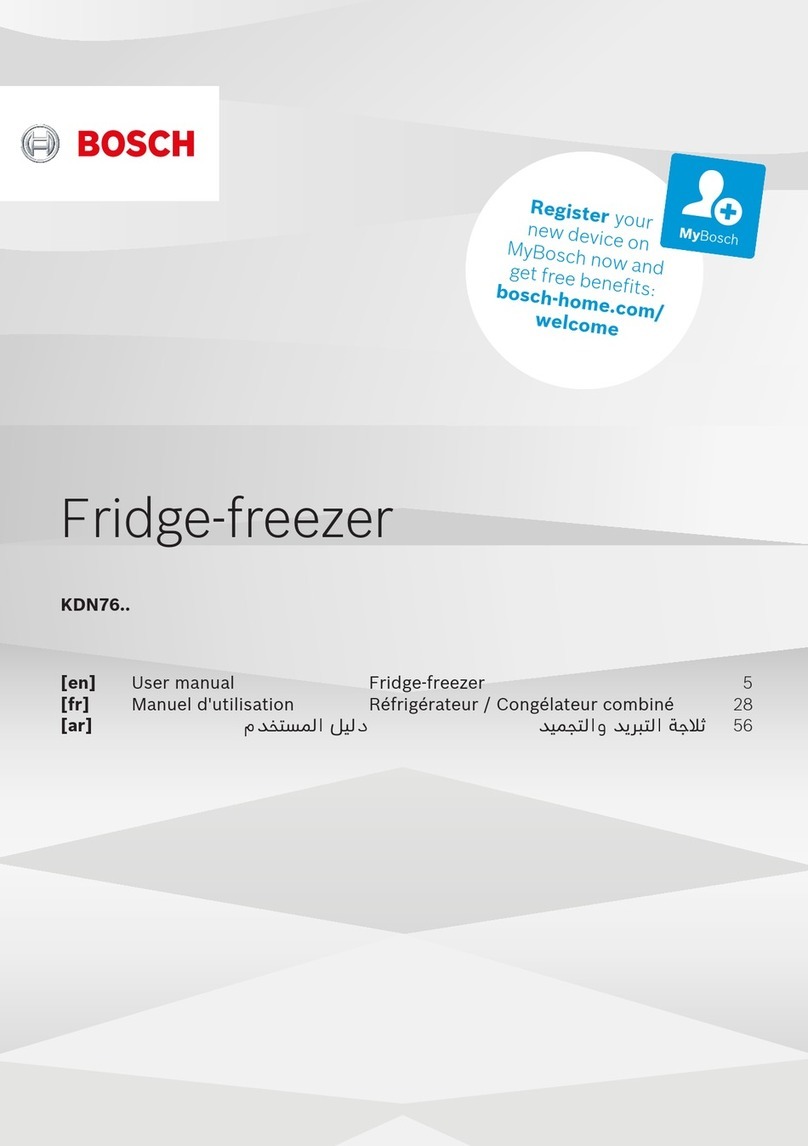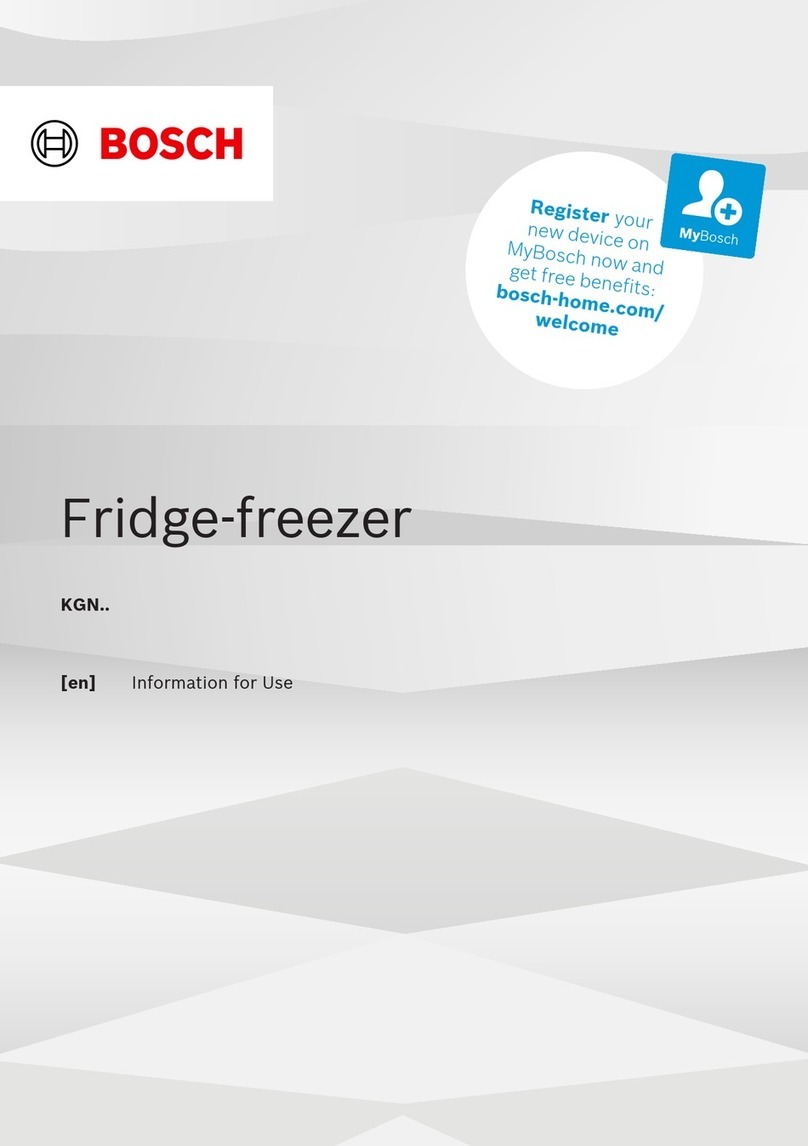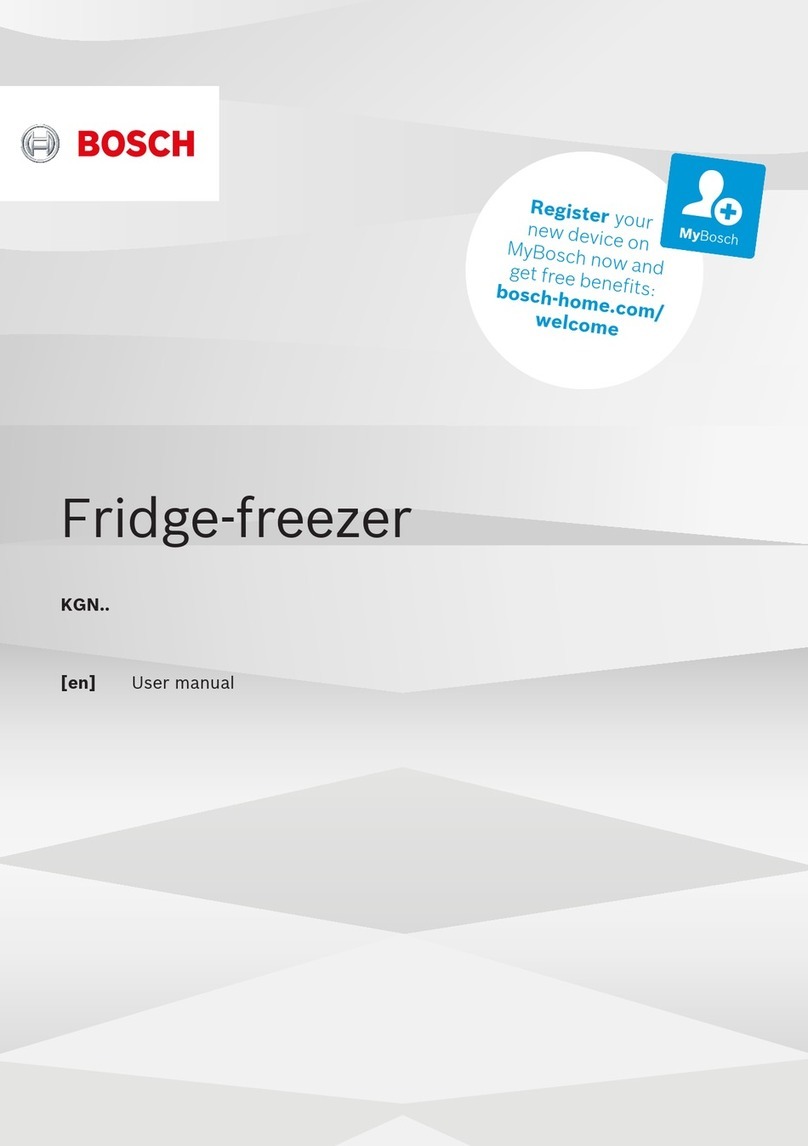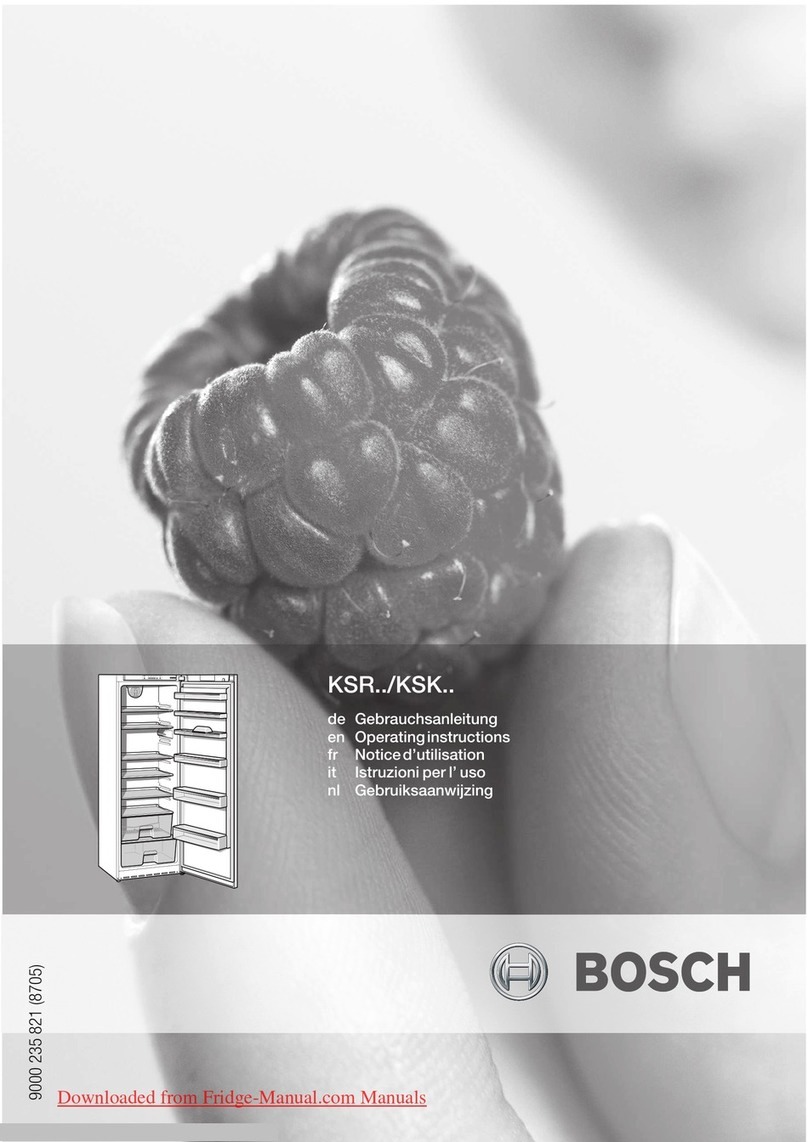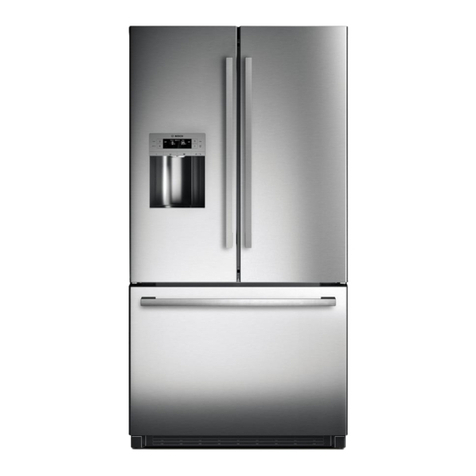
en Intended use
4
Action required:
ʋMake sure that children and other at-risk
persons have understood the dangers.
ʋA person responsible for safety must
supervise or instruct children and other
at-risk persons when they are using the
appliance.
ʋDo not allow children under 8 years old to
use the appliance.
ʋSupervise children when cleaning and
servicing.
ʋNever let children play with the appliance.
Risk of suffocation
ʋAppliances with a door lock: Keep the key
out of the reach of children.
ʋDo not give packing or parts of it to
children.
Appliance damage
To avoid damage to the appliance:
ʋDo not stand or support your weight on
the base, drawers or doors.
ʋKeep plastic parts and door seals free of
oil and grease.
ʋWhen unplugging the mains plug, always
take hold of the plug itself, never pull on
the connecting lead.
ʋDo not use any unauthorised plastic base
stand below appliance.
Weight
When setting up and moving the appliance,
bear in mind that it can be very heavy.
a"Installation site" on page 5
Intended use
Intendeduse
Only use this appliance
ʋfor keeping food cool or freezing it or for making ice
ʋfor domestic purposes in a private household
ʋin accordance with these instructions for installation
and use
This appliance is intended for use up to a maximum
height of 2000 metres above sea level.
Environmental protection
Environmentalprotection
Packing
All the materials are environmentally friendly and can be
recycled.
ʋDispose of the packing in an environmentally respon-
sible manner.
ʋContact your appliance retailer or your local authority
for information about the available disposal methods
and sites.
End-of-life appliances
Valuable raw materials can be recovered by environ-
mentally-friendly disposal.
Warning
Children can become trapped inside the appliance and
suffocate!
ʋTo make it more difficult for children to climb into the
appliance, the shelves and containers should be left
in place inside the appliance.
ʋKeep children away from the disused appliance.
Caution!
Risk of refrigerant and harmful gases escaping.
Do not damage the refrigeration circuit pipes or the insu-
lation.
1. Unplug the mains plug.
2. Cut through the mains power cord.
3. Have the appliance properly disposed of.
Disposal of your old appliance (as per e-waste Rules)
1. When this crossed out wheeled bin symbol is
depicted on the product and its operator’s
manual, it means the product is covered by the
e-waste Management and Handling Rules
2016, and are meant to be recycled, dis-
mantled, refurbished or disposed off by
properly qualified personnel and technology.
2. Dos
a. The product is required to be handed over only to
the authorized recycler for disposal:
www.bosch-home.com/in/about-bosch/
responsibility.html
See also:
Contact No: 180042535287 (toll-free)
Online website: www.ewasteindia.com
b. Keep the product in isolated area, after it becomes
non-functional/un-repairable so as to prevent its
accidental breakage.
Don’t
a. The product should not be opened by the user
himself/herself, but only by authorized service
personnel.
b. The product is not meant for re-sale to any unau-
thorized agencies/scrap dealer/kabariwalah.
c. The product is not meant for mixing into household
waste stream.
d) Do not keep any replaced spare part(s) from the
product in exposed area.
3. Any disposal through unauthorized agencies/person
will attract action under Environment (Protection)
Act 1986.
Note: This product doesn´t use any hazardous
substances as specified in the E-waste (Management)
Rules 2016.
)
ʋ
Avoiding risks to children and other at-risk
persons
Persons at risk are:
ʋ
ʋ
Children
Persons whose powers of perception are
physically or psychologically limited
ʋPersons who do not have sufficient
knowledge about how to use the
appliance safely



